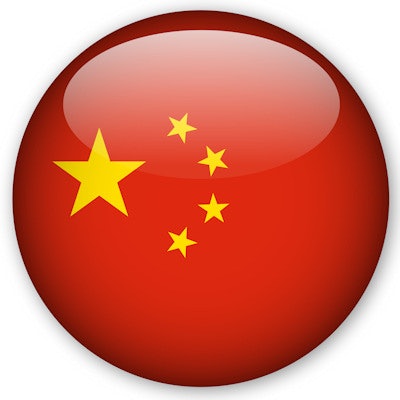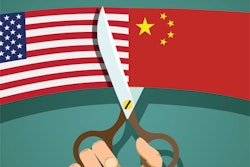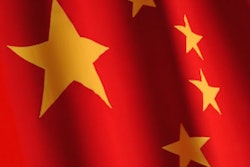
The medical imaging industry has been dragged into the brewing trade war between the U.S. and China. A U.S. federal agency has published a list of 1,300 products imported from China that could be slapped with import tariffs of 25%, with most of the major medical imaging modalities appearing on the list.
The Office of the United States Trade Representative (USTR) on April 3 published the list of 1,300 products that "could be subject to additional tariffs," according to a press release. The full list includes most of the major modalities of medical imaging equipment:
- CT apparatus based on the use of x-rays
- Apparatus based on the use of x-rays for medical, surgical, or veterinary uses (other than CT apparatus)
- Ultrasonic scanning electrodiagnostic apparatus used in medical, surgical, dental, or veterinary sciences
- MRI electrodiagnostic apparatus used in medical, surgical, dental, or veterinary sciences
- Scintigraphic electrodiagnostic apparatus used in medical, surgical, dental, or veterinary sciences
- Apparatus based on the use of alpha, beta, or gamma radiations for medical, surgical, dental or veterinary use
The agency suggested an additional duty of 25% on all products of "Chinese origin" that are listed in the report. If a product currently has no duty placed on it, it would receive a 25% duty; if it currently has a 10% duty, the value would be increased to 35%.
The list is the result of a trade war that began on March 22 when President Donald Trump announced that the U.S. would assess tariffs of up to $60 billion on Chinese imports due to the country's trade practices. While tariffs on imported aluminum and steel generated most of the headlines, the USTR also noted at the time that it planned to levy tariffs on a wide range of products manufactured in China due to what the agency said were unfair Chinese business practices.
In particular, the USTR said that the country allegedly uses foreign ownership restrictions to require or pressure technology transfer from U.S. companies to Chinese entities. China also allegedly imposes "substantial restrictions" on the investments and activities of U.S. companies, forcing U.S. firms to seek licensing terms that unfairly favor Chinese entities.
Further, China allegedly directs Chinese companies to invest in and acquire U.S. companies "to obtain cutting-edge technologies and intellectual property to generate large-scale technology transfer in industries deemed important by Chinese government industrial plans." And finally, the USTR charges that China is responsible for hacking and data theft from computer networks of U.S. companies, further giving the Chinese government access to intellectual property, trade secrets, or confidential business information.
"The Chinese government's technology transfer and intellectual property policies are part of China's stated intention of seizing economic leadership in advanced technology as set forth in its industrial plans," the USTR press release states.
The list of affected products was developed based on those identified by trade analysts at U.S. government agencies as benefiting "from Chinese industrial policies," according to the USTR. Products were removed from the list if tariffs on them were judged likely to cause disruptions to the U.S. economy. The value of products on the list is estimated at $50 billion.
The USTR is taking comments on the proposed tariffs through April 23, and it will hold a hearing on the proposal on May 15 in Washington, DC.
The U.S. tariffs could have a devastating effect on the medical imaging industry, as many firms that once manufactured scanners in the U.S. have moved operations to China to take advantage of lower labor costs. Higher prices for imaging scanners could force many hospitals and imaging centers to postpone purchases until the trade war cools down.
The tariffs could also affect the nascent Chinese imaging equipment export industry. Homegrown Chinese companies have begun to look beyond their home markets to find international customers in the U.S. and Europe, among other locations. A 25% tariff could negate much of the price advantage of these companies.
China has responded by slapping tariffs of its own on 128 U.S. products, ranging from wine to frozen pork, according to an article in Reuters. The Chinese tariffs took effect on April 2.



















